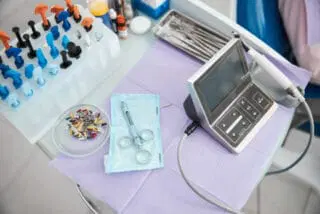Frequently in the periodontal consultations adolescent or preadolescent patients with generalized gingivitis are received. Generally, they are accompanied by parents and presenting very poor oral hygiene. The cases are quite interesting since, depending on the profile of each patient, oral health will also present different responses over the years. Thus, some patients who presented with severe gingivitis at the time of adolescence, and who remained under the supervision of a good dentist over the years, managed to jump to the adult stage without further damage. However, others who did not achieve good control – not only of the bacterial plaque, but also of their lives in the broadest sense of the word – end up becoming potential patients to receive osseointegrated implants.
Puberty is defined as the period of transition between childhood and adolescence, when the development of secondary sexual characteristics and the acceleration of growth occur, leading to the beginning of reproductive functions. In this phase, changes are observed such as the growth of the hairs, the growth of the testicles and the appearance of the breasts, in addition to the increase of the hip in girls and the thorax in boys. The main frame of puberty for men is the first ejaculation, which occurs on average at 13 years. For women, it is the beginning of menstruation, which occurs on average between 12 and 13 years.
In addition to all these physical characteristics that appear in individuals who are at puberty, and the hormonal imbalance present in this phase of life, we can not forget the behavioral characteristics associated with this period. They may reflect poor plaque control, leading to the greater accumulation of etiological factors for the appearance of some type of periodontal disease, more specifically gingivitis. The non-perception of these behavioral changes by the dentist, besides the non-confrontation of them, can bring serious consequences that the patient will carry for life.
Clinically, during puberty, the inflammatory signs of gingivitis can be quite exacerbated, with intense erythema and pronounced edema. A reaction of gingival hyperplasia may occur, mainly in the interproximal areas, where there is accumulation of food, bacterial plaque and calculus deposited. The inflamed tissues can be lobed and retracted. Bleeding can occur during tooth brushing and chewing. Many times, generalized bleeding can occur with minimal amounts of biofilm, as a result of the hormonal changes present. The dentist must evaluate each case individually.
Periodontal treatment in individuals who are in the phase of puberty consists of a rigorous mechanical control of the bacterial plaque through brushing, with emphasis on the use of dental floss and the maintenance of acceptable levels of biofilm. Chemical control with the use of 2% topical clorexidine, or in the form of 0.12% rinsing, can also be performed. In the aspect of direct intervention of the dentist, a meticulous dental scraping and root planing to decontaminate the dental wall of the periodontal pocket should be performed when necessary. This must be done to maintain the health obtained, always monitoring the way in which behavioral changes influence the control of the biofilm.
The most important in this phase of puberty is to make children or pre-teens aware of the need for oral hygiene care they must have, in order to avoid further periodontal manifestations. This awareness is not an easy task to perform by the dentist, since the behavioral changes are accentuated, making it difficult to accept the recommendations of this patient. The help of hygienists, psychologists, psychiatrists or psychotherapists can be very useful for cases in which the collaboration of these patients is not achieved, so that they carry good oral hygiene habits for the rest of their lives and do not become future candidates to receive implants for early losses of dental elements.
To perform successful dental work, it is important to select the correct dental unit and ensure that it facilitates dental practice. That’s why at Kalstein we invite you to take a look at our dental units available at: HERE

